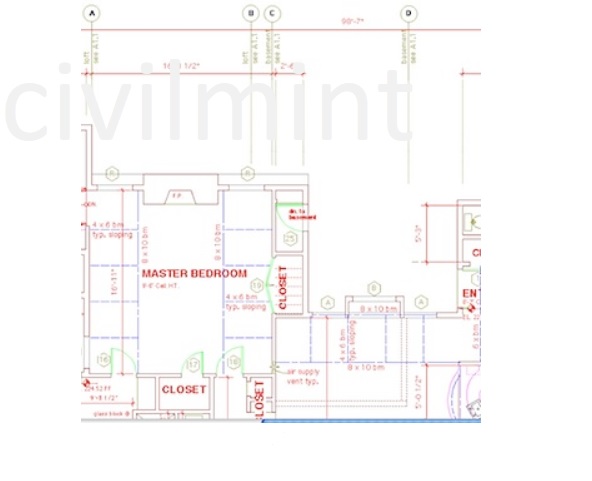
- HOW TO CONSTRUCT A AS BUILT DRAWING HOW TO
- HOW TO CONSTRUCT A AS BUILT DRAWING PDF
- HOW TO CONSTRUCT A AS BUILT DRAWING PROFESSIONAL
Think about hills you have seen from a distance - do they go straight across at the top (yes there are some hills - called mesas - that do this but most do not, right)?
HOW TO CONSTRUCT A AS BUILT DRAWING HOW TO
It's difficult to see any variation on that particular profile, isn't it? For a discussion of vertical exaggeration and how to calculate it, see this discussion on Idaho State's website or UT Austin's page on Topographic Profiles. If we kept the same vertical scale (which in some cases we do want to do), this profile would look like this (the nearly flat blue line on the bottom of this image): Why would geologists do this? Vertical exaggeration allows us to see even small changes in the land surface. This means that in the end, the vertical scale of our profile will be extremely exaggerated (1,000 feet/20 feet = 50x vertical exaggeration). For this map, that little bar on the map represents 3,000 ft - each little tick mark on the vertical scale of your profile is about the same size as one division on the vertical axis but we have made each tick 20 feet (not 1,000 as would be indicated by the horizontal scale).

HOW TO CONSTRUCT A AS BUILT DRAWING PDF
The following list provides some guidelines for effectively constructing a topographic profile and uses the topographic map and profile line provided to the left (you can download a pdf of the map and profile to work from (Acrobat (PDF) 2.3MB Jul18 11)): The line should go through some part of the map that you are interested in, so that you get useful information. In many cases, this line is given to you (often labeled something like A-A' or A-B). To construct a topographic profile, you need to find a line on a map that is interesting. Before you start, you might want to review some of the rules about topographic maps before continuing (you can find rules at Idaho State U.'s field exercise, U. How do I construct a topographic profile? Examine the topographic map image to the left (you can click on the image to make it larger or you can download the map and a profile (Acrobat (PDF) 2.3MB Jul18 11) to try the steps below on your own). In other words, profiles help you to understand what a topographic map is telling us about hills and valleys along a particular line.
HOW TO CONSTRUCT A AS BUILT DRAWING PROFESSIONAL
Professional geologists use exercises such as the ones you will practice with below to help you (and us) visualize a two dimensional cross-section of what the land surface looks like (from the side) - giving you a slice of the third dimension. Because maps are two-dimensional but represent three dimensions (that is, topgraphic maps are flat with lines that represent hills and valleys). Interestingly, many geologists are quite visual and like to have visual representations of data. Topographic profiles are used to understand what a topographic map is telling you in a specific area (or, you can think about it like it is giving you a "side view" of the landscape along a specific line on the map). When should I construct a profile? In introductory geoscience courses, a profile is appropriate when you are asked to construct a cross-section or profile. For topographic profiles, you must extrapolate the contour of the landscape (that is, whether it goes up or down) when faced with repeating elevation contours. In the case of constructing a topographic map, you must extrapolate the placement of the appropriate elevation contour. This is different from the plotting of a best fit line because it involves extrapolation of information from spatial data. In such instances, you will be asked to plot some points and connect them with a smooth line. When working data with topographic maps, topographic profiles and their construction, we often ask you to connect data points with a smooth curve. There are other instances in mathematics and graphing where a smooth curve is necessary (e.g., exponential curves, sine waves, etc.) this page is focused on a specific instance when you will construct a topographic profile from a two dimensional map. This page is geared toward thinking about the shape of landscapes and pretty unique to geoscience courses. If you aren't sure how to plot points on a graph, please make sure you visit and work through the plotting points tutorial before moving on with this part of the graphing pages.

Other parts of this resource on graphing take you through plotting points and constructing a straight line through data points.

How do I construct a topographic profile?


 0 kommentar(er)
0 kommentar(er)
